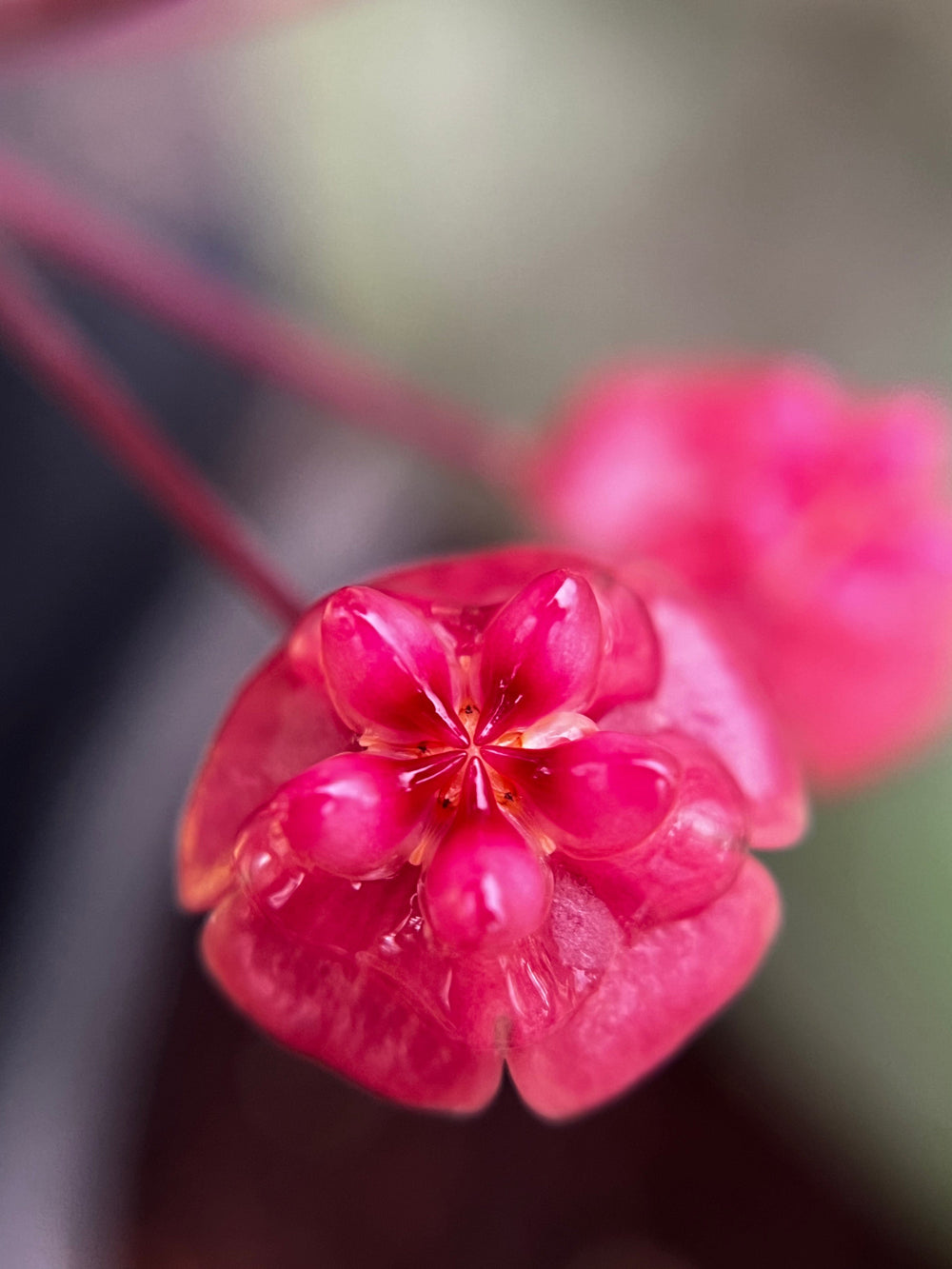Hoya Australis - Plant Care Guide

Table of Contents
- Light Requirements
- Watering
- Soil
- Temperature and Humidity
- Fertilizing
- How to Propagate Hoya Australis?
- Common Pests and Diseases
- Hoya Australis - Toxic to Cats?
- The Bottom Line
Hoya australis, commonly known as the Wax Plant or Porcelain Flower, is a popular houseplant with a trailing growth habit and striking clusters of star-shaped flowers. Originating from Australia, this succulent is relatively low-maintenance and suitable for both experienced plant collectors and those new to gardening. Read on and learn everything you need to know about Hoya australis care!
Here's a quick overview of what we'll cover:
- Hoya australis thrives in bright, indirect light and prefers well-draining soil.
- Watering should be moderate, allowing the soil to dry out a bit between waterings.
- Average room temperatures are ideal, and while higher humidity is appreciated, it's not essential.
- Fertilize during the growing season and repot only when root-bound.
- Keep an eye out for common pests and avoid overwatering to prevent root rot.
- With the right care, you'll be rewarded with beautiful blooms.
Light Requirements
Hoya australis thrives in bright, indirect light, similar to the dappled sunlight it experiences in its native Australian forests. While it can tolerate some shade, it will produce more abundant and vibrant blooms when placed near a window that receives ample sunlight. Avoid exposing it to direct sunlight, as the intense rays can scorch the leaves and damage the plant.
Watering
Just like other types of Hoya plants, Hoya australis is adapted to drought-like conditions and prefers its soil to dry out completely between waterings. Overwatering is a common cause of problems for this plant, leading to root rot and other diseases. Allow the soil to dry out thoroughly before watering, and then water thoroughly until excess water drains from the pot's bottom. Avoid leaving the plant sitting in standing water, as this can promote root rot.
Soil
A well-draining potting mix is essential for Hoya australis to prevent root rot and ensure healthy growth. A succulent or cactus mix is ideal, as it contains the right balance of perlite or sand to promote proper drainage and aeration. Stay away from heavy, water-retentive soils that can lead to overwatering.
Temperature and Humidity
Hoya australis thrives in warm temperatures similar to its native Australian climate. It prefers temperatures between 65°F (18°C) and 85°F (29°C). While it can tolerate cooler temperatures, it is important to avoid exposing it to frost or cold drafts, as these can damage the plant.
Although Hoya australis can tolerate low humidity, higher humidity levels can encourage more frequent and abundant flowering. If your home has dry air, you can increase the humidity around your plant by misting the leaves regularly, using a humidifier, or placing the pot on a pebble tray filled with water.
Fertilizing
Hoya australis is a light feeder and does not require frequent fertilization. You can fertilize it once or twice during the growing season (spring and summer) with a balanced houseplant fertilizer diluted to half strength. Make sure not to over-fertilize, as this can lead to salt build-up in the soil and damage the plant.
How to Propagate Hoya Australis?
Hoya australis can be propagated from stem cuttings or leaf cuttings, allowing you to expand your collection or share this beautiful plant with others.
Stem Cuttings:
- Select a healthy stem cutting: Choose a healthy stem with at least two nodes (the points where leaves grow).
- Remove the leaves from the bottom node: This will help the cutting focus its energy on rooting.
- Plant the cutting in a well-draining potting mix: Use a succulent or cactus mix to ensure proper drainage.
- Place the pot in a warm, bright location: A warm, sunny windowsill is ideal for rooting.
- Keep the soil moist but not soggy: The soil should be slightly damp but not overly wet.
Leaf Cuttings:
- Select a healthy leaf with a petiole: The petiole is the stem-like part that attaches the leaf to the plant.
- Plant the leaf in a well-draining potting mix: Use the same potting mix as for stem cuttings.
- Place the pot in a warm, bright location: Provide indirect sunlight for optimal rooting.
- Keep the soil moist but not soggy: Maintain a slightly damp environment.
It may take several weeks or months for the cuttings to root and start producing new growth. Be patient and provide consistent care during this time. Once the cuttings have established roots, you can pot them up into individual containers and continue to care for them as mature plants.
Common Pests and Diseases
While Hoya australis is generally resistant to pests and diseases, it can occasionally be affected by mealybugs and scale insects. These pests can be identified by their cottony or waxy appearance.
If you notice any signs of infestation, you can treat the plant with insecticidal soap or neem oil. Follow the instructions on the product label carefully to ensure effective treatment.

Hoya Australis - Toxic to Cats?
Hoya australis is toxic to cats. If ingested, it can cause vomiting, diarrhea, and other gastrointestinal symptoms. If you have a cat, it is crucial to keep this plant out of reach. Consider placing it in a location that is inaccessible to your feline friend, such as a hanging basket or on a high shelf.
The Bottom Line
Hoya australis is a captivating and relatively low-maintenance houseplant that can bring beauty and fragrance to your home. With proper care, it can reward you with clusters of delicate, star-shaped flowers for years to come. By following the tips outlined in this guide, you can ensure that your Hoya australis thrives and adds a touch of elegance to your indoor space.











